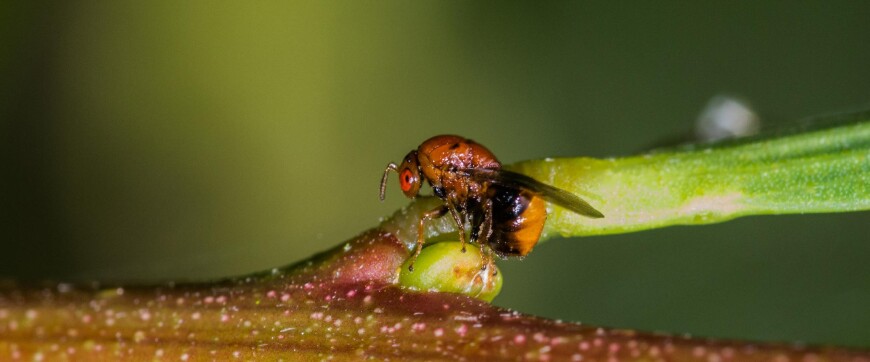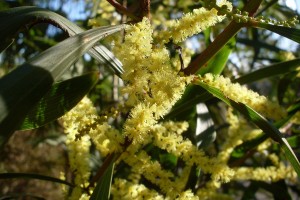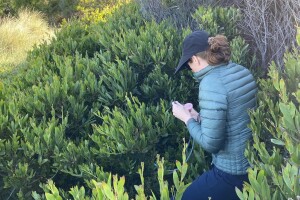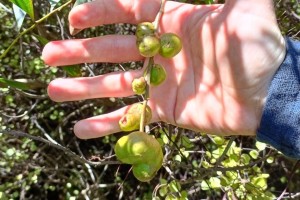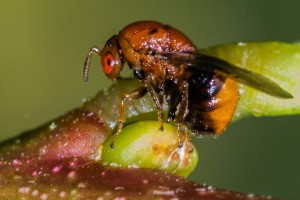Sydney golden wattle bud-galling wasp
History in New Zealand
The Sydney golden wattle bud-galling wasp is native to Australia. It was first imported into containment by the Bioeconomy Science Institute - Manaaki Whenua Landcare Research Group in 2022 and introduced shortly after approval to release was granted by the Environmental Protection Authority that same year. Adult wasps emerging from galls collected in South Africa were released directly from containment after careful screening to ensure they were disease free and correctly identified. In 2023, a survey found that galls had successfully formed a year after wasps were first released at two sites in the Manawatū-Whanganui region.
This wasp was previously used in a successful biological control programme in South Africa in the early 1980s where it reduced the economic and environmental impacts of the weed to such an extent that it is no longer a priority for control. This agent was introduced more recently into Portugal for biocontrol of Sydney Golden Wattle.
How would I find/recognise it and what is its lifecycle?
Adults are incredibly short-lived, living for a few days in late spring or early summer, depending on when they emerge.
Because of their small size (3-4mm) and short lifespan, you are unlikely to encounter this wasp. Due to their parthenogenic reproduction (females can lay fertile eggs without the need for mating) most adults are females. The males are smaller, slender, black and are expected to be very rarely found. Females start laying eggs immediately after emergence predominantly in new flower buds, and to a lesser extent in the vegetative buds of Sydney golden wattle. Eggs hatch a month later in summer. After hatching, larvae start feeding inside the buds throughout the rest of summer, autumn and winter. As the larvae get larger, internal feeding induces the development of an outgrowth called a gall, instead of inflorescences or new shoots. The galls become more obvious in spring as the larvae grow. Larvae complete feeding and pupate inside a small chamber within the galls in late spring and early summer. After pupation, adults chew their way through the gall to emerge, leaving distinct exit holes on the outside of the galls.
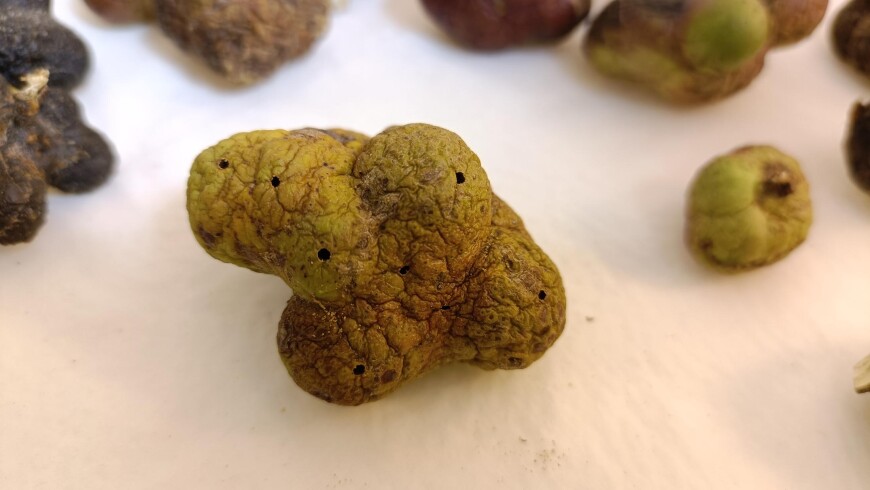
Image: cluster of galls with emergence holes.
How does it damage Sydney Golden Wattle?
The development of galls instead of flowers or new shoots reduces seed production and growth of the weed. The plant redirects resources to produce the galls, acting as energy sinks which in turn weakens the whole plant. Plants lose vigour with heavy galling. It is not uncommon to find clusters of galls on the same branch. In South Africa, branches are reported to break from the weight of abundant galls.
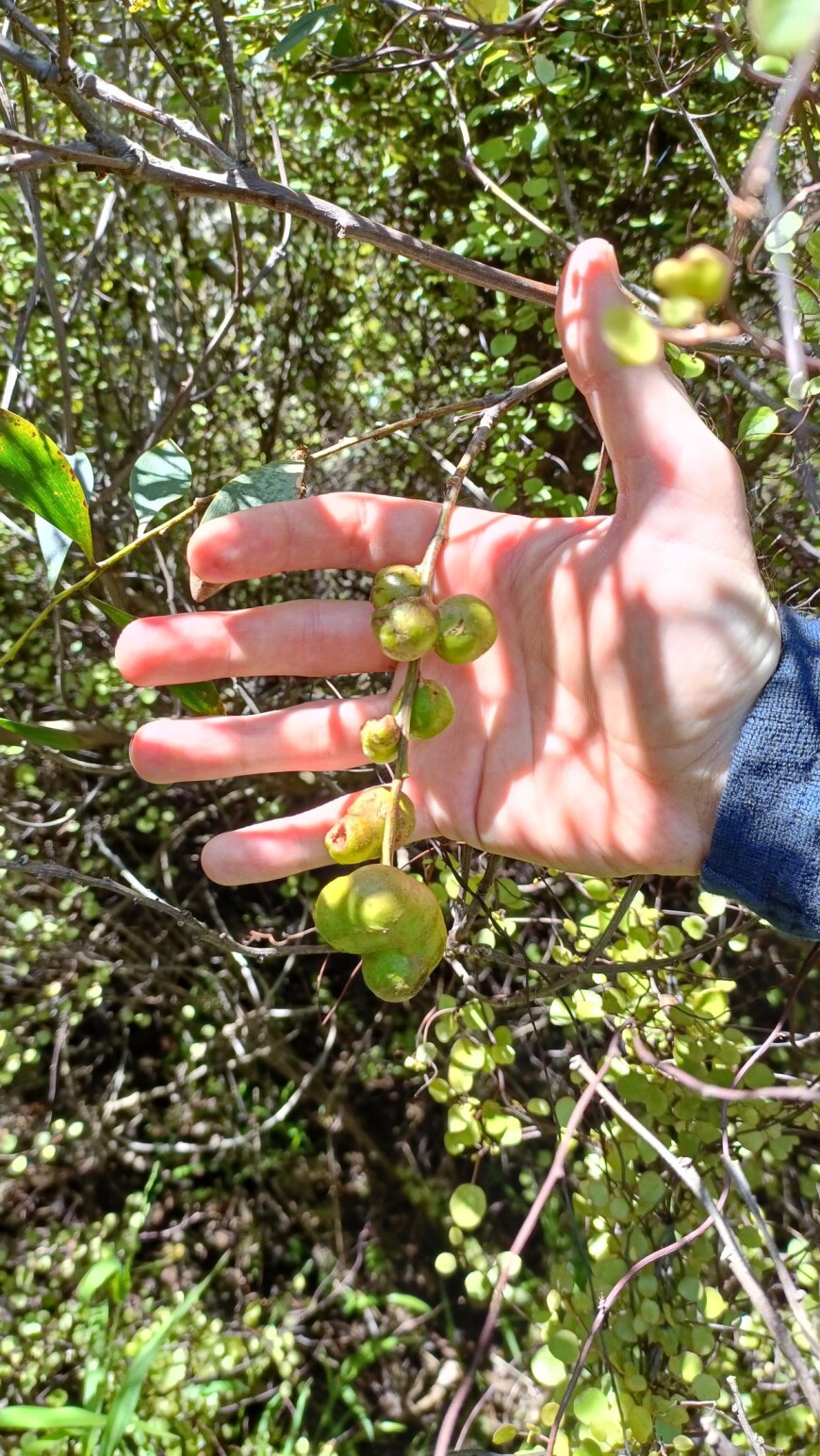
Image: cluster of galls on a branch.
Will it attack other plants?
This wasp is highly host-specific and is restricted to Acacia longifolia. It has been recorded on a subspecies, coastal wattle (Accacia longifolia var. sophorae) in eastern Australia, which is equally invasive in disturbed and coastal areas in New Zealand.
How effective is it?
This biological control programme initiated in South Africa in the early 1980s was highly successful, with reductions in seed production of more than 90%. Branch dieback and mortality of the whole tree can even be expected if attack rates are high enough.
How can I get the most out of it?
When the wasp is well established at initial release sites, it will be worth helping them to establish in all areas where they are needed. Although the wasps are not strong fliers, they are likely to be blown to other trees by strong gusts of winds. Nevertheless, helping to shift them to new sites will help to speed up the process of establishing the wasp in all areas invaded by Sydney golden wattle.
How do I select a release site?
Read Guidelines for selecting release sites for biocontrol agents.
How do I collect it for release at other sites?
It is too early to collect galls for redistribution, but this will be the easiest way to relocate the wasps just before they emerge in late spring/early summer. When release sites are well established, galls can be collected and introduced to new areas by attaching branches of galls to Sydney golden wattle trees.
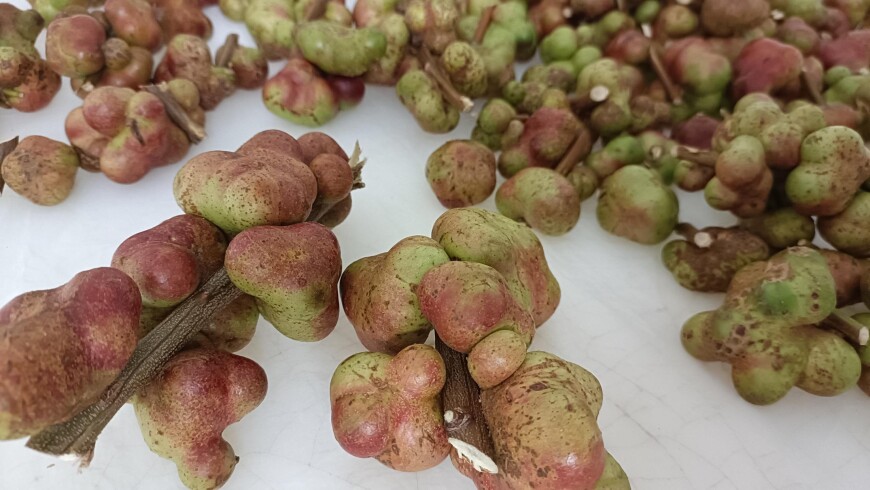
Image: galls harvested to collect emerging wasps.
How do I manage the release sites?
Avoid any activities that could interfere with the wasps such as herbicide applications, particularly at nursery sites to be used for collections and redistribution.
Key contact


